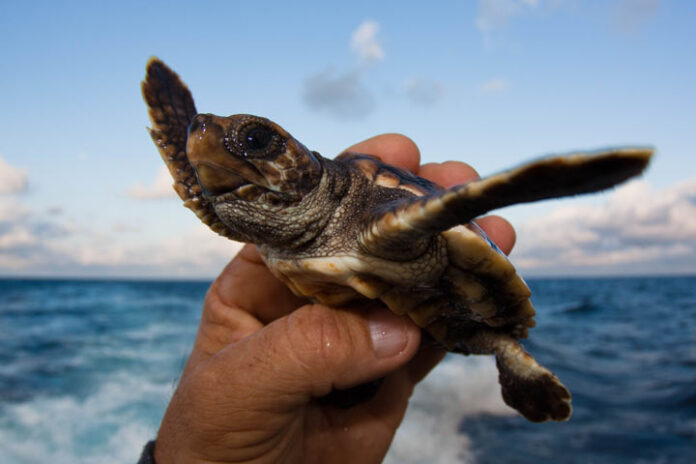Almost all sea turtles that hatched on the beaches of Florida in the past four years were born female, according to scientists — and the problem isn’t likely to stop.
The culprit behind this phenomenon is human-caused climate change, which has resulted in increasingly frequent and severe heat waves that are interfering with sea turtle reproduction.
According to the National Ocean Service, the sex of baby turtles is determined after fertilization, when turtle mothers bury their eggs in the sand to incubate before hatching.
Read more:
Freya the walrus sinks boats as her star rises — and she might be cleaning up Europe’s seas
If a turtle’s egg incubates at temperatures below 27 C, it will hatch as a male. If the egg incubates above 31 C, a female turtle will be born. Sand temperatures between 27 and 31 degrees will result in a mix of baby male and female turtles.
The higher the temperature above 31 C, the higher the ratio of female turtles, researchers also found.
“As the Earth experiences climate change, increased temperatures could result in skewed and even lethal incubation conditions, which would impact turtle species and other reptiles,” the National Ocean Service said.
And it seems that this warning has come to pass in Florida and other places where turtles are prevalent.
“The frightening thing is the last four summers in Florida have been the hottest summers on record,” said Bette Zirkelbach, manager of the Turtle Hospital in Marathon, a city in the Florida Keys.
“Scientists that are studying sea turtle hatchlings and eggs have found no boy sea turtles, so only female sea turtles for the past four years,” Zirkelbach said, whose turtle centre has operated since 1986.
Read more:
Mammoth bones, ‘ghost’ footprints: Did humans arrive in North America much earlier than we thought?
Such an uneven male-to-female ratio of sea turtles is worrying because the population may soon become stunted. It also serves as another example of how the climate crisis is interfering with Earth’s ecosystems: extreme weather and climate patterns have proved too volatile for many species to adapt.
Trending Stories
Kidnapped girl found on side of road was held captive with bodies of mother, brother
Canadian ban on importing handguns will kick in this month, says minister
“Over the years, you’re going to see a sharp decline in (sea turtle) population because we just don’t have the genetic diversity,” said Melissa Rosales Rodriguez, a sea turtle keeper at the recently opened turtle hospital at the Miami Zoo. “We don’t have the male-to-female ratio needed in order to be able to have successful breeding sessions.”
Reproduction problems aren’t the only issues plaguing sea turtle populations.
The Sea Turtle Hospital is also combatting a wave of fibropapillomatosis, a disease that causes cauliflower-like tumours around the eyes and mouths of sea turtles, sometimes even forming in internal organs. The disease is contagious and can be deadly if not treated.
“The Turtle Hospital was the first. But, sadly … there’s a need all throughout Florida,” Zirkelbach said regarding the need for more rehabilitation centres in the state.
And it’s not just Florida’s turtles that are facing these threats.
A study on green sea turtle populations in Australia’s Great Barrier Reef found that only about one per cent of turtle hatchlings were being born male due to the same problem.
In the warmer, northern areas of the Great Barrier Reef, the researchers found that 99.1 per cent of juveniles, 99.8 per cent of sub-adults and 86.8 per cent of adult-sized green sea turtles were female.
Read more:
Heat wave nicknamed ‘the Blob’ may have affected Pacific Ocean’s carbon capture powers: UBC study
“Combining our results with temperature data show that the northern (Great Barrier Reef) green turtle rookeries have been producing primarily females for more than two decades and that the complete feminization of this population is possible in the near future,” the study reads.
Sea turtles aren’t the only species whose sex is determined by the temperature of their nesting environments. Alligators, crocodiles and other lizards like the bearded dragon are also at risk.
© 2022 Global News, a division of Corus Entertainment Inc.



